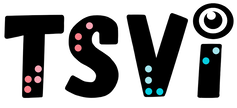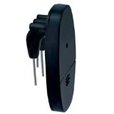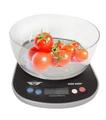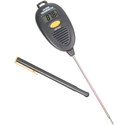- Home
-
Learn
- History of VI >
- Legislation & Laws >
- Vision Professionals >
-
VI Program Resources
>
- Program Printables
- Itinerant Teaching Tips
- Year at a Glance
- VI Program Handbook
- Caseload Analysis
- Organization & Time Management
- Professional Development
- Teacher Standards
- Professional Ethics
- Awards & Recognition
- APH Scholar Program
- Professional Organizations
- Certification Organizations
- Dealing with Challenges
- Professional Publications >
- Relatable Books for All Ages >
- Family Resources >
- Plan
- Basics
-
Teach
- Teaching Strategies >
-
Compensatory Skills Instruction
>
-
Social Skills
>
-
Self Determination
>
- Body Image & Acceptance
- Making Personal Goals
- My Vision Presentation
- My Self-Description
- Create a Personal Data Sheet
- Disclosure Decision
- Disability Statement
- Requesting Help
- Fighting Fears
- My Circle of Support
- Personal Responsibility
- Advocate for Safe Enviroments
- Having Picture Taken
- Coping with Change
- Aging Eyes
- Physical Characteristics
- Political Activism
- Laws Regarding Persons with Disabilities
-
Sensory Efficiency
>
-
Independent Living
>
- Orientation & Mobility Instruction >
- Recreation & Leisure >
-
Career & Vocation
>
-
Grow
- Complete Set Bonus >
-
Recorded Presentations
>
- Webinar: Tips for Being a "Physically Fit" TVI
- Webinar: The Art of Teaching the ECC
- Webinar: Virtual & F2F Strategies
- Webinar: Foundations of Teaching the ECC in the Age of Virtual Instruction
- Webinar: Itinerant Teaching Strategies
- Webinar: Using Themes to Teach the ECC
- Webinar: Conducting a FVLMA
- Webinar: Selecting the Right AT
- Webinar: Developing SMARTER Goals
- Webinar: Determining Service Intensity Using the VISSIT
- Webinar: Activities to Teach the ECC
- Webinar: Accessible Content for BLVI
- Webinar: Accommodations for VI
- Webinar: MIMO Strategies & Activities
- Webinar: SIDPID Strategies & Activities
- Webinar: Standard Course of Study Strategies & Activities
- Webinar: Job Tasks for Job, Career & Life
- Shop
- Jobs
Science AdaptationsBy: Carmen Willings
teachingvisuallyimpaired.com Updated May 27, 2024 Students who are blind or have low vision will typically need some accommodations to safely and fully access the science curriculum. Meeting with the Teacher of Students with Visual Impairments to discuss curriculum and objectives is a crucial first step. Here's a breakdown of how to incorporate accommodations:
By incorporating these strategies, you can help students with visual impairments engage fully in the science curriculum. Accessible Science Materials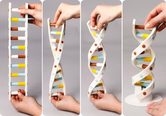
DNA Twist is a model, available through APH, that demonstrates the structure of the DNA molecule in a way that is accessible to students who are blind and visually impaired. The DNA Twist model is made of two foam sidebars representing the sugar-phosphate “backbone” and ten rungs representing the paired bases. The paired-base rungs are made of contrasting colors and textures to convey the concept of the base-pairing rules that govern the structure of double-stranded DNA molecules. The model holds its shape when twisted.

Tactile Astronomy, a web resource from Amazing Space, is a downloadable tactile image library for microcapsule paper. It is a library of selected Hubble images that can be printed in a tactile format.
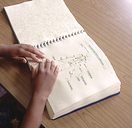
Basic Tactile Anatomy Atlas This two-volume set of thermoformed tactile graphics gives an overview of the human body. It includes the skeletal, muscular, nervous, and endocrine, cardiovascular, lymphatic, respiratory, digestive, urinary, and reproductive systems. Each tactual diagram has braille and print labels accompanied by a brief braille description.
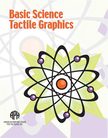
Basic Science Tactile Graphics These tactile graphics set from APH consists of vacuum-formed raised-line drawings that are intended to supplement the graphics in a students adapted textbook. It depicts objects, concepts, and relationships that are covered in nearly all elementary science textbooks. The drawings use several types of lines and textures, as well as different heights. The lines and areas with the highest relief signify the most important features in a diagram.
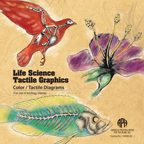
Life Science Tactile Graphics This product from APH includes a collection of vacuum-formed, full-color raised-line tactile graphics intended to supplement the figures and diagrams in life science textbooks. It depicts organisms, processes, concepts, and patterns that are typically covered in middle and high school life science courses.
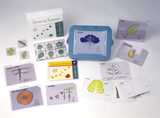
Sense of Science: Plants are a product from APH. The kit includes a set of colorful, raised-line overlays designed to be used with a lightbox, or as a stand-alone item. Overlays include bean seed cross-section, flower, leaf, tree, etc.
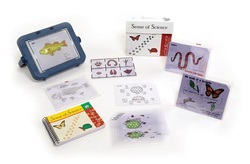
Sense of Science: Animals is a product from APH. The kit includes a set of colorful, raised-line overlays designed to be used with a light box, or as stand-alone items. Overlays include an ant, bird, fish, life cycle of a frog, etc.
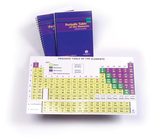
Periodic Table of the Elements Reference Chart and Booklet , available from APH, is available in a durable and colorful print-braille version. The chart comes with a reference book that contains additional tables listing the elements by name, atomic number, electron configurations, etc.
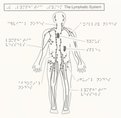
Tactile Vision Graphics is a great source of a range of pre-made tactile diagrams. Science diagrams include Layers of Skin, Spinal Column, Respiratory System, Nervous System, The Eye, Lymphatic System, Circulatory System, The Heart, The Brain, and the Digestive System. They also provide braille/tactile maps, cards, books, and math diagrams.
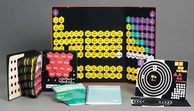
Azer's Interactive Periodic Table Study Set This interactive study set, available from APH, is designed to make learning about the periodic table of the elements accessible to students with visual impairments and blindness. The tangible materials can assist in the instruction and demonstration of concepts related to the arrangement of the periodic table, atomic structure, ionic and covalent bonding, and balancing of chemical equations to students who benefit from a hands-on, interactive model. Special attention was given to make the materials tactually discriminable and visually appealing to students who are blind or with low vision, yet appropriate for all students regardless of visual acuity.

Sense of Science: Astronomy is a product of APH. The kit includes a set of colorful, raised-line overlays designed to be used with a lightbox, or as a stand-alone item. Activities include a learning objective, a list of vocabulary and needed materials, a step-by-step procedure, extended activities, visual adaptations, math and language connections, and science tidbits. Activities are complemented by visual/tactile overlays and fold-out 2-dimensional displays.

The Tactile Demonstration Thermometer from APH allows students to independently read, set, and compare temperatures. A two-textured, two-colored adjustable mercury column with an easy-grip tactile indicator. It includes both Fahrenheit and Celsius scales presented in both large print and braille. Tactile degree markings every 5 and 10 degrees. The mercury column slides up and down to demonstrate temperature reading.
eTouchSciences recently developed The Novint Falcon, a haptic device that allows students to interact with 3D objects that are displayed on the computer screen. Current apps that work with this new technology allow students to feel the shapes and textures of the parts of a plant cell, experience how much things weigh on other planets, explore a volcano and feel the lava flow, and learn about surface area and volume. To the right is a YouTube video of how this device works!
Science Resources...
Perkins School for the Blind hosts a site entitled "Accessible Science" which is a great resource on making each area of the science curriculum accessible. Additionally, they offer classroom printouts on accessible science experiments.

The American Chemical Society is an independent membership organization for chemistry professionals. It distributes free training materials about classroom modifications for students with vision loss as well as other disabilities.
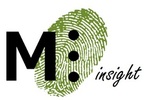
MOLinsight is a web portal to open- source software. It offers free software that allows a screen reader user to access an electronic version of the periodic table and a free program that reads aloud the visual configurations of atoms and molecules.

The National Center on Accessible Instructional Materials provides information for students with sensory, physical, cognitive, or learning differences and their teachers about accessible instructional materials.

National Center for Blind Youth in Science is an initiative of the National Federation of the Blind. Users may find information about how to adapt science lessons, where to find accessible math programs, and what non-visual techniques are most effective in the STEM areas.

SciTrain provides free online courses for high school math and science teachers to train them to be more effective instructors for students with disabilities.

Adapting Science for Students with Visual Impairments: A Handbook for the Classroom Teacher and Teacher of the Visually Impaired.
This resource book from APH provides suggestions in making operational science activities accessible to students who are visually impaired or blind. It includes a preparation checklist to alert the teacher to safety issues. It also includes a skills checklist to ready the student for laboratory and classroom activities. Coming together is a beginning, staying together is progress, and working together is success. —Henry Ford |
ECC Instruction
Concept Development
Alternative Communication
Tactile Graphics
Access Classes
VI AT Printables Webinar: Selecting the Right AT Overview of Assistive Technology Basic AT Use Problem Solve AT Braille Notetaker Use iOS/Tablet Use
Basic Computer Use Computer Access Windows Keystrokes Word Processing & Shortcut Productivity Online Access VI AT Resources Sensory Input Sensory Areas & Rooms Routines Auditory Readiness Visual Efficiency Skills
Responsibility & Independence General Home Safety Bathroom Adaptations Personal care Hygiene & Grooming Personal Health Medication Adaptations Household Skills Maintenance Shopping & Consumerism Dressing & Clothing Identification Clothing Care Telephone Use Eating & Table Manners Food Preparation Service Agencies Safety Money & Budget Eating & Table Manners
|
|
Teaching Students with Visual Impairments LLC
All Rights Reserved |
- Home
-
Learn
- History of VI >
- Legislation & Laws >
- Vision Professionals >
-
VI Program Resources
>
- Program Printables
- Itinerant Teaching Tips
- Year at a Glance
- VI Program Handbook
- Caseload Analysis
- Organization & Time Management
- Professional Development
- Teacher Standards
- Professional Ethics
- Awards & Recognition
- APH Scholar Program
- Professional Organizations
- Certification Organizations
- Dealing with Challenges
- Professional Publications >
- Relatable Books for All Ages >
- Family Resources >
- Plan
- Basics
-
Teach
- Teaching Strategies >
-
Compensatory Skills Instruction
>
-
Social Skills
>
-
Self Determination
>
- Body Image & Acceptance
- Making Personal Goals
- My Vision Presentation
- My Self-Description
- Create a Personal Data Sheet
- Disclosure Decision
- Disability Statement
- Requesting Help
- Fighting Fears
- My Circle of Support
- Personal Responsibility
- Advocate for Safe Enviroments
- Having Picture Taken
- Coping with Change
- Aging Eyes
- Physical Characteristics
- Political Activism
- Laws Regarding Persons with Disabilities
-
Sensory Efficiency
>
-
Independent Living
>
- Orientation & Mobility Instruction >
- Recreation & Leisure >
-
Career & Vocation
>
-
Grow
- Complete Set Bonus >
-
Recorded Presentations
>
- Webinar: Tips for Being a "Physically Fit" TVI
- Webinar: The Art of Teaching the ECC
- Webinar: Virtual & F2F Strategies
- Webinar: Foundations of Teaching the ECC in the Age of Virtual Instruction
- Webinar: Itinerant Teaching Strategies
- Webinar: Using Themes to Teach the ECC
- Webinar: Conducting a FVLMA
- Webinar: Selecting the Right AT
- Webinar: Developing SMARTER Goals
- Webinar: Determining Service Intensity Using the VISSIT
- Webinar: Activities to Teach the ECC
- Webinar: Accessible Content for BLVI
- Webinar: Accommodations for VI
- Webinar: MIMO Strategies & Activities
- Webinar: SIDPID Strategies & Activities
- Webinar: Standard Course of Study Strategies & Activities
- Webinar: Job Tasks for Job, Career & Life
- Shop
- Jobs
